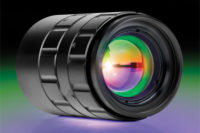Today’s integrated machine vision systems can range from a very simple single camera to an array of multiple cameras at one operational cell inspecting hundreds of features on a single part. Often these systems are created after the development and execution of the assembly process and core automation. As a machine vision system integrator providing an effective solution to address the quality issues affecting the part, it is often a challenging endeavor to inject automation after the fact. These turnkey machine vision systems need to integrate within the existing physical and control logic structure of the current operational cell. Often times a customer expresses to the machine vision integrator the specific quality issues that are affecting the part with no regard for the process and constraints imposed while the part is being manufactured. It is good practice to video the station in question to permit the entire integration team to review all aspects of the existing cell to ensure a good understanding of the cell prior to the final design phase.
After the development and execution of the assembly process and core automation. As a machine vision system integrator providing an effective solution to address the quality issues affecting the part, it is often a challenging endeavor to inject automation after the fact. These turnkey machine vision systems need to integrate within the existing physical and control logic structure of the current operational cell. Often times a customer expresses to the machine vision integrator the specific quality issues that are affecting the part with no regard for the process and constraints imposed while the part is being manufactured. It is good practice to video the station in question to permit the entire integration team to review all aspects of the existing cell to ensure a good understanding of the cell prior to the final design phase.
At this point the vision system integrator may become very aware of what the “problem” is without understanding the entire scope of what the initially designed solution may entail. It is essential during the preliminary design phase of a turnkey system to step back and ensure every aspect of the existing process is understood. This may include such simple things as identifying sky lights within a factory roof that can contaminate the part with undesirable light during midday sun. Even the presence of other sensors or devices that emit light can be a factor. This is why it is often a good practice to use a technique where the light source is of a very narrow wavelength (562nm ±20nm) with a bandpass filter on the lens of the camera that will only allow light from 542nm to 582nm to pass through. This approach ensures that only the light provided by the vision integrator is what is seen within the vision application. Once the physical aspects of the cell and solution become clear the customer must be engaged in regards to the points of interest on the part that will dictate the “PASS” or “FAIL” state of any one part during manufacturing.
Evaluation of Inspection Process
Often times it is essential to provide the customer an evaluation of the inspection process prior to implementation. Here the integrator should ensure that all features of interest are expressed to the customer as well as the means or technique used to create the measure. What can be a surprising aspect of machine vision to a new vision system customer is the concept of having a few false reject events to occur to ensure that no false accepts take place. During the design phase of the vision algorithms it is required that a customer provide a collection of “Good” parts as well as a pool of “Bad” parts. Statistically speaking this would mean an infinite number of each to ensure the set points for each measured feature can be calculated. Without this collection of parts it is impossible to create an effective vision solution. With these good and bad parts the integrator will use various vision software methods to analyze all the parts and all the features to create a collection of data sets.
This is where the true feasibility of the system will take place. For any one feature, once a vision tool has been created, a population of data points will usually have some degree of uniqueness across the good and bad parts. If the data does not have two mutually exclusive distributions of results there will thus be a need to reject some good parts to ensure no faulted parts are passed and allowed to continue to the customer. In other words there is a cost in rejecting some good parts to ensure there can never be a condition where a failed part continues on to the customer.
To safeguard against deploying a vision system that does not meet the requirements of the customer it is a good practice to create a smaller scope vision evaluation project. This evaluation should attempt to overcome all the various field deployment issues as well as ensure the regions of interest on the part can be assessed for quality without the full capital costs of the complete turnkey system. Often times with smaller scope turnkey systems this evaluation is free to the customer and helps reduce the risk to both the integrator and customer. With larger complex systems and an understanding customer this evaluation can even be a paid engineering study to validate success prior to the full deployment of the complete vision system. It is much better to spend 10% to 20% of the complete system cost early on to conclude the system would be not feasible.
Tools Continue to Advance
Today’s tools, both hardware and software, are an ever changing and rapidly growing collection to make even the most difficult of vision inspections plausible. The origin of vision solutions and turnkey systems relied on software systems where DOS and Windows based software had to be custom written using very expensive vision libraries and some very educated and talented software developers. With the proliferation of vision system hardware and software, today solving vision related problems has become much more economically feasible and achievable. There are two base types of vision solutions today: hardware based smart sensors that provide both image acquisition and analysis and software based systems that require a personal computer and a collection of cameras that only provide images to a software application which was written by the integrator.
The use of smart cameras makes economic sense when the camera count to solve the problem is low, as these systems are much more costly than PC systems. The smart camera does have some advantages in that they tend to be industrially hardened with ratings of up to IP67 (dust tight and submersible to one meter), an ability to connect to various programmable logic controllers (PLC) types and perform native IO operations and thus not require a control panel. These smart cameras often require a programming interface application that is used to configure the vision sensor to perform the designed steps required to solve the vision problem. They also do not require the user to be a technical software developer as these applications are usually designed for simple and straight forward implementation of common vision tools. Once the specific vision job is created the file is simply saved into the vision sensors flash memory for execution on the line.
When the camera count exceeds four or the vision tasks are too complex a PC based system can be deployed. With the acceptance of GigE vision cameras and the use of PoE (Power of Ethernet) the camera count controlled by one vision application can exceed 20 units. These cameras are far less expensive but do not have industrial enclosures or smarts. They are simply a provider of an image; the custom application created by the integrator has to handle all the connectivity to the camera as well as PLC communication (usually OPC) and discrete IO. This type of custom solution allows for the greatest in creativity and flexibility in that a full suite of tools can be applied to solving the problem.
There are many suppliers of vision system algorithms that surpass the power found in the smart cameras of today. This does require that the integrator be more diversified in regards to talent as a vision specialist as well as a software developer would be required to create these multi-camera complex applications. An important consideration when using these Ethernet based cameras is they require a dedicated one Gigabit connection to the computer. To ensure there is no bandwidth limiting issues several multi-port or advanced managed network switches may need to be used to ensure each camera has the pipeline large enough to handle all the possible images at full frame rates.
Today’s turnkey vision systems are a hybrid of talented vision specialists, creative mechanical and electrical designers and software specialists. The market has forced suppliers to also be as imaginative as possible with what they create to ensure the integrator has a toolbox with enough diversity and quantity of tools to meet the ever demanding needs of customers striving to create a higher quality part. The customer also has to be aware of the dynamic and often unpredictable outcome of deploying a vision system. Often times once deployed the true noncompliance of the part in question overwhelms the customer, forcing a complete rethinking of how the part was fabricated and hopefully including a turnkey vision system integrator to help create a process that can be cost effective with limited to no failed parts. V&S
Ross Rawlings is the president and CEO of Radix Inc. For more information, call (519) 737-1012 ext. 242, email [email protected] or visit www.radixcontrols.com
TECH TIPS
Today’s turnkey vision systems are a hybrid of talented vision specialists, creative mechanical and electrical designers, and software specialists.
Suppliers must be imaginative with what they create to ensure the integrator can meet the needs of a customer striving to create a higher quality part.
The customer also has to be aware of the dynamic and often unpredictable outcome of deploying a vision system.





